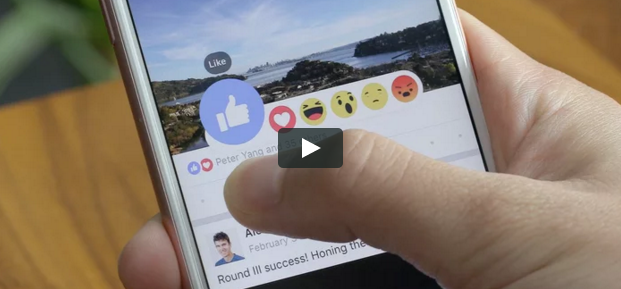
It’s not a dislike button, but it’s the next-best thing. Facebook has changed its ‘like’ button to a range of emotions including love, surprise and sadness. By holding down your finger or hovering your mouse over the ‘like’ button, a range of reactions will appear for you to choose from. People are still getting used to them of course, but the question for us as marketers is ‘How will this affect my business?’. In the short term, it won’t, especially. But in the long term, those little reactions are going to make a big impact. Here’s how:
They will affect Facebook’s algorithm
Ultimately, Facebook will use them as a gauge for how relevant or compelling your content is. They’ve said that to start with, all reactions will count as likes when determining the popularity of a post and where it should appear in your newsfeed. During the coming months however, they plan to look more closely at people’s reactions and use this to decide what they think you’d like to see more of.
“Over time we hope to learn how the different Reactions should be weighted differently by News Feed to do a better job of showing everyone the stories they most want to see,” Facebook said.
Encourage people to react angrily too often and they’ll start seeing less of you, in theory. Personally, I’m frustrated by this. People can be angry or sad about causes they’re passionate about, and still hugely engaged with you as a brand. A negative reaction isn’t necessarily a rejection of your content – in fact, it’s often an indicator that someone cares deeply.
Facebook are yet to outline the exact details of how they will apply this, so I’m hoping for some awareness of the nuances of human interaction. More likely, they’ll be looking for whether the reaction is appropriate for the post, something that won’t always be accurate. Sarcasm, anyone? Given their push towards paid content or no content, mismanaged reactions will easily add fuel to the fire.
They will affect community management
Understanding how to react and the subtleties of online conversation are key to successful community management. So reading reactions correctly, and knowing which reactions to use when engaging with other people’s content online, are going to be really important for brands. It’s obvious, but an angry face for someone’s political view that you don’t agree with doesn’t really aid the debate. Equally, a sad face when your ex shares details of their upcoming nuptials isn’t appropriate either.
As a brand, you still need to listen, and take the time to reply fully. In most cases this means words, not emojis. If someone’s complaining, an angry face won’t cut it but a sad face and an apology might. And if someone’s sharing a good review with you, the like button doesn’t really cut it any more. You now love it, right?
This will change content planning forever
When we create content for a brand, we align every post with a clear objective, or call to action. Previously, our Facebook posts were limited to one of four possible actions: Hitting ‘like’, sharing our post, commenting or clicking through. We’ll craft the copy and the visuals according to what we want someone to do.
Those options have just expanded, meaning our copy and our visuals need to be even more finely tuned to people’s emotions that ever before. While the buzzword for 2015 was engagement, this year’s buzzword is definitely ’emotional’. The brands that connect on this level will be winning at it big time.
By Kate Tyler, Director of Shake Social


